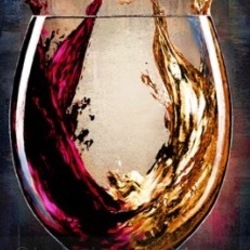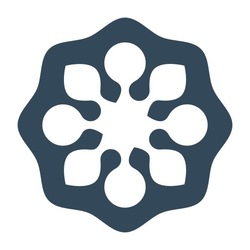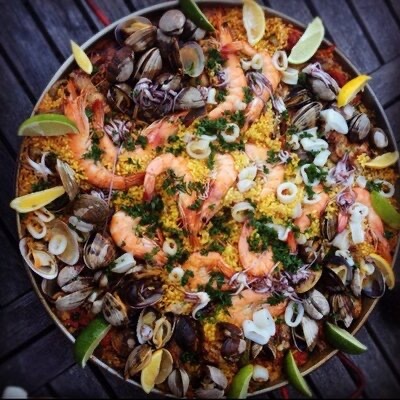Caves Do Salgueiral
Sinegal Estate
Reserve Cabernet Sauvignon Blend 2016
Of the Napa wines I tasted over 4 days on this trip, the 16 Sinegal Reserve & the 13 Seavey Cabernet were my favorites. Both great wines but, stylistically very different. The Seavy big and bold and the Sinegal pure beauty & elegance.
The nose reveals very dark currants. Dark & milk chocolate. Blackberries, creamy black raspberries, black plum & plum, mocha powder, core of anise, beautiful dark spice, soft volcanic soils, some dry brush and lavender, violets and fresh dark red florals.
The body is full. The tannins are really meaty but, exceptionally soft, fine and meaty. Lots of dark spice with plenty of heat. The mouthfeel is gorgeously sexy with feminine elegance. Dark & milk chocolate. Blackberries, creamy black raspberries, black plum & plum, mocha powder, core of anise, beautiful dark spice, big sweet tarry notes, soft volcanic soils, some dry brush, lavender, violets and fresh dark red florals. The acidity is perfect. The finish is well balanced sexy and gorgeous. The structure, tension say this needs to cellar eight to ten years.
Photos of; tasting cellar area, modern stainless tanks, outside terrace tasting and or dining area and their grounds and lake.
Producer history and notes...Sinegal Estate was founded in 2013 with wines made from their 30 acre Inglewood estate in St Helena (not to be confused with the Inglenook Estate in Rutherford). This is not a new property, it was part of an original land grant and its more modern day history dates back to 1879 when owner Alton Williams purchased the property and planted the first vines in 1881.
The property has changed owners a number of times over the decades. At one point the Jaegers’ owned the estate, Bill Jaeger and his wife Lila lived here. These Napa Valley pioneers were in part responsible for helping establish Freemark Abbey and Rutherford Hill. Lila was also a gardener and established beautiful gardens on the property.
Owners, David (father)and James (son) Sinegal purchased the property in 2013. James was the co-founder of Costco and once CEO. David worked at Costco for 21 years.
After the purchase, David divided each of their vineyards into smaller blocks, picking selectively (30 times in 2013) rather than all at once, and adding technology to the vineyards so they have up to the date reports on a number of data points including temperatures, soil moisture and various barometric pressures. If they want to selectively water, say vine #67 in row number three, they can do so with their irrigation system. Extremely efficient!
Nine acres of vines are planted to various red varietals including; Cabernet Sauvignon, Cabernet Franc, Malbec and Petit Verdot. They have some of the older Cabernet Franc vines in the valley that are 30+ years old.
The soils here are diverse and can vary even within small geographic ranges on the property. Some of their vineyards are planted on the valley floor – while their upper vineyards are hillside, on the edges of the Mayacamas Mountains.
Their landscape above the property is interesting and part of the Mayacamas Mountains. Visually, it appears drier than other parts of this mountain range and the vegetation reflects that with grey pine and more open natural vegetation rather than the thicker wooded vegetation more commonly associated with parts of Spring and Diamond Mountains to the north.
After purchasing the property, David created planned and laid out his vision to create a world-class boutique wine making operation. Many wineries in the Napa Valley can take years before they come to fruition, not so here. After only about 10 months, the existing winery was remodeled. 6,500 feet of caves were expanded and drilled into the hillside behind the winery and a new hospitality center was built. The hospitality center ties in very well with the winery. From the small tasting room, large doors open revealing the tanks.
A vegetable garden slightly under an acre grows just south of the winery building. Vegetables from this garden are sold to nearby restaurants.
A skeleton key appears on the labels of their wine and is prominently displayed on the outside of their winery building. This has historical significance. The original key opens the front door to the historic home on site and is displayed in the tasting room. With respect to the history of this property, this one key has already become iconic to the brand.
You only need to look inside of the winery to see that their wine making team is focused on quality. Each of the small lot tanks have built in pumps which can be controlled and programmed to do pump-overs anytime of the day or night. In addition, these tanks have multiple points at which the temperature can be controlled. These tanks do not necessarily handle all their fermentation’s. They also ferment small lots in puncheons and barrels as needed. Control across the board is the key here and it is the control of the details in wine making that is is so integral from when the fruit first arrives through to when it is bottled.
2013 was their inaugural release. The focus is currently on two primary varietals, Sauvignon Blanc and Cabernet Sauvignon. The 2013 Sauvignon Blanc were sourced from the estate but, then it was determined it was growing in an area better suited for red varietals so it was torn up and new plantings were made in the back of the property. While not far from these original plantings, their new home for their Sauvignon Blanc features different soils and is growing in a cooler part of the property.
The wine making team has been experimenting with the style of this varietal since 2013 with subsequent vintages seeing more oak. Especially, using the slightly longer cigar shaped barrels , which have extra surface area for maximizing complexities including textural feel imparted from aging the wine on the lees in these particular barrels. Maceration on the red wines is often 8-10 days and sometimes up to 20 days.
Most of their sales are direct to visitors or through their mailing list. However, they do have some distribution outside California in Florida, New York and Washington. Primarily to restaurants. — 7 years ago


Caves São João
Quinta do Poço do Lobo Cabernet Sauvignon
This is quite a complex wine. Give it some time to breathe and it will reward you for that. Doesn't need any more time to age, if anything drink it soon. I didn't have another to compare it to, but it may be just past it's prime. Primary flavours: Tobacco, stewed plum, dried sour cherry. Secondaries: leather, smoke, white pepper, vanilla. Tertiaries: green capsicum, spearmint. Full body, long finish, very intense, very complex, many levels of expression.
The short answer - buy it and drink it — 9 years ago
Caves do Casalinho
Grande escolha Vinho Verde Branco Seco 2016
Great vinho verde with full body — 6 years ago
Louis Roederer
Cristal Brut Champagne Chardonnay Pinot Noir Blend 1990
The 1990 Cristal is remarkable. Polished, nuanced and light on its feet, the 1990 is all class. Citrus, orchard fruit and floral notes are wonderfully lifted throughout. A slight reductive note adds character on the finely knit finish. I can’t think of a better way to start this tasting. Simply put, the 1990 is a total rock star. Moreover, it is much more delicate than most wines from this ripe vintage. Amazingly, the 1990 tastes like it is still not ready! “Nineteen ninety was my second vintage here,” says Chef de Caves Jean-Baptiste Lécaillon. “It was ideal. The fruit was just perfect. We blocked the malolactic fermentation completely and only fermented 6-7% of our lots in oak, as opposed to the more typical 20%, in order to preserve as much freshness as possible. The wine was made by my predecessor, Michel Pansu, but I was learning. This was the first year I started working with oxygen by reducing sulfites in vinification to pre-oxidize the Chardonnay musts, as I do know, which allows me to get rid of all the unstable, oxidative compounds. With Pinot, on the other hand, you need a little bit of sulfur at crush or you lose the brilliant fruit. (Antonio Galloni, Vinous, December 2018) — 7 years ago
Caves São João
Quinta do Poço do Lobo Red Blend 1995
That was fun @$72 on list. Eclectic selection #birba. Dry. Medium to full. Sandalwood. — 7 years ago
Caves do Barrocão
Garrafeira Red Blend
Añada 1980. — 8 years ago
Caves da Montanha
Vinha do Poeta Dão Red Blend 2010
So light! So fresh! So grapey! — 8 years ago
Caves Messias
Quinta do Cachão Douro Touriga Nacional
Had in sintra - Portuguese grape - awesome — 8 years ago
Caves da Montanha
Monte do Cansado Alentejano Tinto Red Blend
Очень богатый букет. Насыщенный но не слишком сухой вкус. — 9 years ago
Caves Vale do Rodo
Reserva Cabeça de Burro Douro Vinho Tinto 2012
Tasty sipper. Smooth and smoother. — 9 years ago

Château Boswell
True Course Russian River Valley Chardonnay 2015
The nose is soft and delicate. Meyer lemon, pineapple, lime, cream, touch of melted butter, melon, soft chalkiness, hint if green apple, honeysuckle, fruit blossoms, light caramel notes, saline and spring flowers.
The body is full round. Texture is amazing. Mouthfeel stunning! Meyer lemon, pineapple, lime, cream, touch of melted butter, melon, soft chalkiness, hint if green apple, honeysuckle, fruit blossoms, light caramel notes, delicate soft white spice, saline, yellow lilies and spring flowers. The acidity is perfect. Their wood use is very subtle as few in Napa do. The finish is perfectly textured, balanced, seamless, elegant, persistent and delicious.
Photos of, their Estate hillside vines over their cellars, their caves which show a fault line in the upper left of the photo, private tasting area in their cellar, Estate vines in front of their property. — 7 years ago

Caves São João
Reserva Quinta do Poço do Lobo Baga Blend 1995
Very unique wine. Similar characteristics to Nebbiolo. Beautiful color from the age reflecting a very earthy earthy full-bodied wine. The initial nose also has tar, wet soil and cassis. Needs half a day (at least) to open up. The flavor has cherry, raspberry, tobacco and beef-like flavor. Great smoky finish. Very different for me — 7 years ago
Flora Springs
Trilogy Napa Valley Cabernet Sauvignon Blend 1993
They should have called the Winery Floral Springs based on the nose. Beautiful; blackberry, black raspberries, dark cherries, strawberries, dry cranberries and plum floral fruits. Nice spice, vanilla, touch of clove & cinnamon, used leather, dark rich soil, crushed volcanic minerals, black fruit tea, black raspberry cola and dark fresh florals with violets. The tannins are 95% resolved. The body is lush & ripe. The length, tension & structure are nearing the end. Just a few years left of being worthwhile. However, the balance is stereo tuned. The fruit on the palate shows even more elegant & ripe floral fruits than the nose. Blackberry, black raspberries, dark cherries, strawberries, dry cranberries and plum floral fruits. Nice spice, vanilla, light clove & cinnamon, used leather, dark rich soil, crushed volcanic minerals, black fruit tea, black raspberry cola and dark fresh florals with violets for days. The acidity is like a waterfall. The beautiful, long, elegant finish is a little lean yet has a nice richness. Beautiful wine that just missed 9.2. Photos top to bottom and left to right. The Winery; which is separate from the other tasting room only on Hwy 29. The tasting room on Hwy 29 in St. Helena, Flora Spring caves and the front of their tasting room along Hwy 29. Producer notes and history...the stone winery on the grounds were built in 1885 by two immigrant brothers from Scotland, James and William Rennie. They were in construction, built the winery and planted 60 acres of grapes. The brothers had some bad fortune when phylloxera consumed the vines, and then a fire in 1900 destroyed their wine press and cooperage. In 1904, they sold the winery and fifteen years later Prohibition started. The winery was then closed until 1933. That year, Louis Martini, looked into their magic eight-ball and saw Prohibition collapsing and bought the Rennie property. They built a new stone house and also made a reserve wine from the hillside vineyards. However, the old winery remained empty until the Komes family bought the property, 325 acres, the old farm house, the newer stone house and 60 acres of vineyards. The son thought he’d persuade his dad to restore the old winery and proposed to call it Chateau Jerome. Although it had been designed by Hamden McIntyre an architect of several other classic 19th-century Napa wineries, by 1977, the place was a wreck. The tin roof of the building had so many holes in it. They called it the starlight roof. His father looked at it and stated, “I’ve worked all my life for my good name. I don’t want to squander it now.” John’s mother, Flora, however, sided with her son on the potential of the property. Carrie Komes suggested they could name the winery for her mother-in-law. Combined with the abundant springs on the land, they decided the name would be Flora Springs. It was a sure way to their mom’s heart and father’s wallet. Komes put his construction expertise to work on renovating the old winery, which still had scorch marks on the walls. So skeptical was his father about his son’s wine-making project, they divided the winery building. John rented half where he put his first fermenting tank, which he named R2D2. He invited a couple of friends from his wine-making class to help make wine at the new place. He also hired Mary Ann Graf, who in 1965 had been the first woman to graduate from the viticulture and enology department at UC Davis to help manage the project. She told John, “if you don’t hire a winemaker, I’ll quit.” He did and the 1979 Flora Springs chardonnay won a gold medal at the Los Angeles County Fair. In those days, it was fairs, not ratings. This was his first lesson in marketing as they sadly sold all the wine before they won the medal. Fairs were the big news instead of ratings as Parker had not yet risen to fame as he was the only one to call the grand 1982 Bordeaux vintage correctly. They submitted their 1981 Cabernet to eight fairs and won seven gold medals. From there, the winery just kept growing. They were the 67th winery in the county. Over the years, they had their ups and downs, but kept growing. One of their highlights was the creation this wine, Trilogy. It was one of the first Meritage blends in the valley. By 1984, they planted all the Bordeaux varietals; Malbec, Merlot, Cab Franc, Cabernet Sauvignon and Petit Verdot. They wanted to create a blend “by taste”, not by formula for a nice smooth wine that goes deep into the palate. They worked with a little of this and little of that. The first Trilogy was Cabernet Sauvignon, Merlot and Cab Franc. It was dubbed as velvet in the mouth. A lot of what they do is taming the tannins. One man who bought Trilogy by the case said, “it’s the only red wine his wife would drink young.” From the leftovers, they began making single-varietal estate wines. Another highlight was the discovery of a unique clone of Sauvignon Blanc in vineyards his father bought in Oakville. UC Davis could identify nothing like it in their vast library of clones. They were a bit ahead of the times, but this clone showed Flora Springs how different in that time period what Sauvignon Blanc could be like as it took all the grassiness out of Sauvignon Blanc. — 8 years ago



Caves do Barrocão
Bairrada Garrafeira Particular 1965
(16.5/20) Аромат варенья из чёрных ягод и клубники, кожи и корицы. Умеренная кислотность и гладкие, деликатные танины. Очень хорошо! — 9 years ago
Scholium Project
The Prince In His Caves Farina Vineyards Sauvignon Blanc
I flipping love this wine. So much fun! Grapefruit/firm/food friendly. If you get the chance, do it! — 9 years ago












Noel Lourdes
Full bodied and lingering complexity. A great blend that comes from the Baga grape unique to the region of Bairrada. If this was from Châteauneuf-du-Pape expect to pay 3x more. — 6 years ago